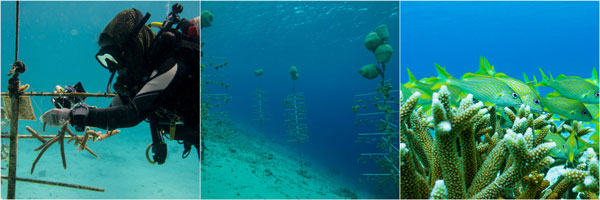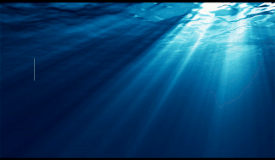 PHILIPSBURG:---Nature conservation organizations in St Maarten, Saba, Statia and the Turks and Caicos Islands will start within several weeks planting structures made from bamboo and rope in their marine parks with the objective to regenerate coral species, the numbers of which have been severely depleted over the last few decades. The focus will be on Elkhorn and staghorn corals, species which are fast growing and relatively insensitive to sediment, a significant factor affecting coral on all of the islands. The project is managed by the Marine Park Management Organizations, Wageningen University/IMARES in cooperation with IUCN and funded by the European Union.
PHILIPSBURG:---Nature conservation organizations in St Maarten, Saba, Statia and the Turks and Caicos Islands will start within several weeks planting structures made from bamboo and rope in their marine parks with the objective to regenerate coral species, the numbers of which have been severely depleted over the last few decades. The focus will be on Elkhorn and staghorn corals, species which are fast growing and relatively insensitive to sediment, a significant factor affecting coral on all of the islands. The project is managed by the Marine Park Management Organizations, Wageningen University/IMARES in cooperation with IUCN and funded by the European Union.
The last decade coral reefs in the Caribbean have deteriorated due to coral bleaching, diseases and coastal development. With this project the participants hope to create new reefs. The plan is to source small coral fragments from so called mother colonies of elkhorn and staghorn coral on the islands. The fragments will then be hung on locally developed ladder-like, flexible structures that are placed under water with at least five structures being deployed per island. The trees can be removed to prevent them from being damaged by storms or strong current. The coral fragments can grow 10 to 12 cm a year; after three years in the nursery they are can be transplanted to form parts of new coral reefs.
The Nature Foundation St Maarten, Saba Conservation Foundation, STENAPA and Turks and Caicos Reef Fund are now in the process of selecting the exact locations. “We are looking for spots with not too much current and clean water. Preferably also shallow water, which makes it possible for divers and snorkelers to come and check on the progress. However, if we cannot find a suitable place, we have to go deeper”, says Tadzio Bervoets, manager from the Nature Foundation St Maarten. “The structures are one to two meter high and once they are in place, they will be closely monitored once a week by marine rangers. There is no risk of entanglement as they will be below the general depth of outboard engines.”
Coral reefs are among the most threatened ecosystems in the world. At the same time they provide income for millions of people: they provide a habitat for fish and other species, attract dive tourism and protect the coastline against erosion. “I look forward to working with the nature organizations and I am confident of a good outcome. Raising and out planting new coral colonies will provide new living space for fish and invertebrates and provide sustainable income for the local community”, says coral scientist Dr. Erik Meesters from IMARES. “We can contribute to and learn from coral restoration projects in other countries.
Follow the project on Facebook and see how coral restoration evolves on your island https://www.facebook.com/rescq/?pnref=story
www.facebook.com/rescq
www.rescq.eu













